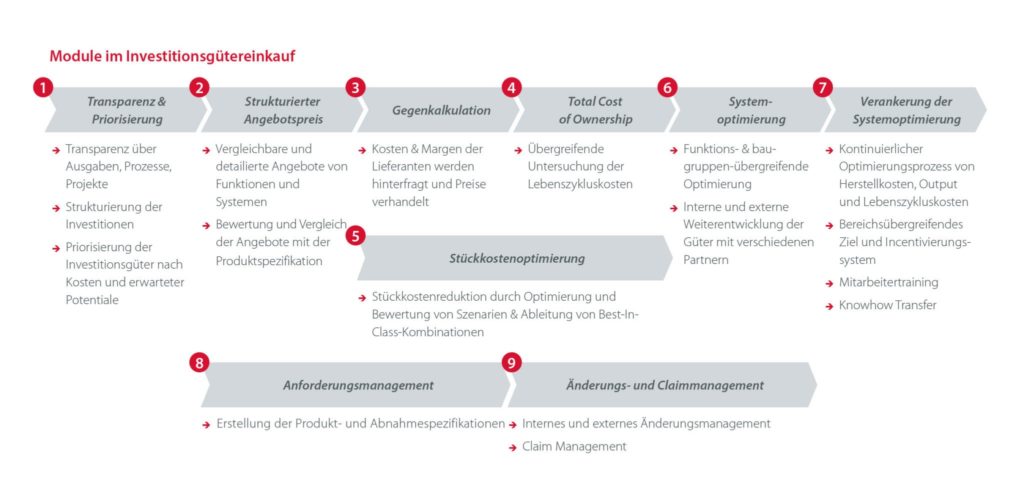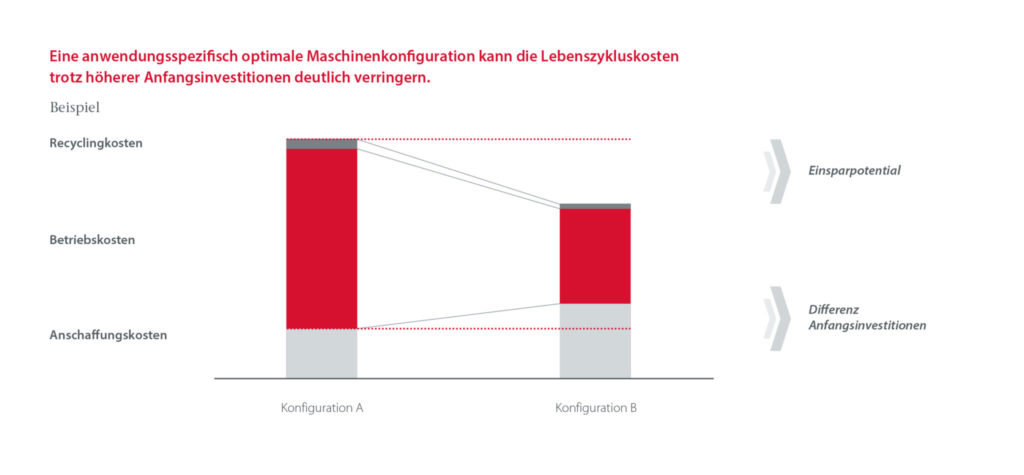Purchase of Capital Goods
With each investment, a company determines its competitiveness for several years. Nevertheless, this often takes place in processes with little structure. Purchasing is usually involved due to the amount of the amounts but can often only negotiate an already fixed product. In some cases, the affected purchaser is even faced with a product that has already been ordered. Purchasing alone cannot change this situation, but there are optimization approaches.
It is important to involve the relevant specialist departments as well as controlling in the purchase of capital goods and to act as a team. This ensures a timely integration of purchasing into the procurement of capital goods as well as a shortened procurement time. This team must have the freedom not only to question the planned investments, but also to present the planned effects in the profit and loss statement and – in the case of several locations – to make comparisons between the locations and capacity analyses. This is the only way to ensure that investments are genuinely managed.
Modules in the purchase of capital goods

An application-specific optimal machine configuration can significantly reduce the life cycle costs despite higher initial investments (example)

Project outcomes
- Structuring of investment processes
- New type of comparative valuation of various investments
- Cost reduction >10% based on the acquisition cost
- Cost reduction >40% based on lifecycle costs


